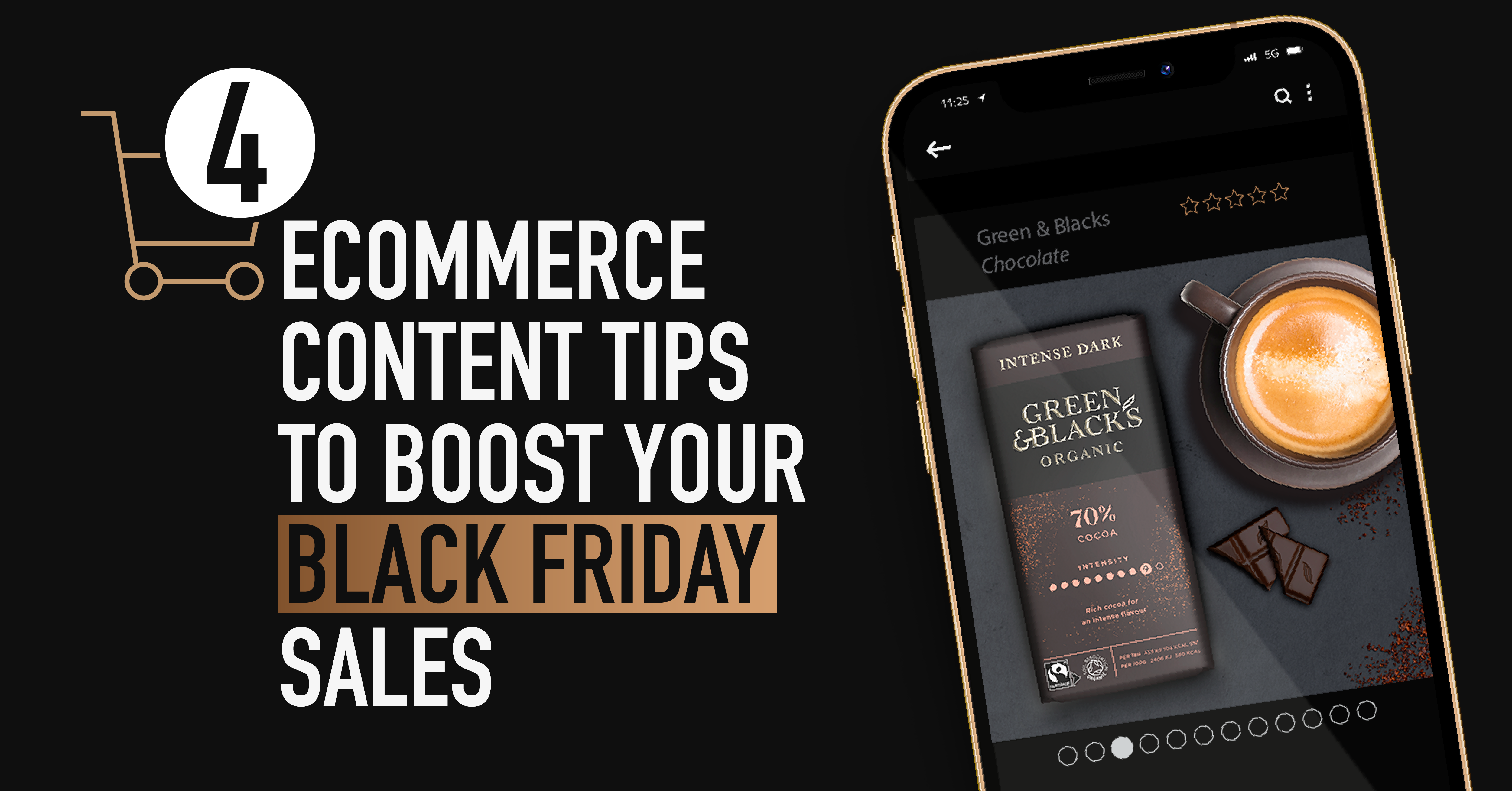 Now that Halloween has passed and the new John Lewis Christmas ad is screening on televisions across the country, we’ve turned our attentions to the festive holiday and all the joys that come with it — decorating the tree, movie marathons by the fire, mulled wine, mince pies and pigs in blankets — we’re getting excited (and rather hungry) just thinking about it!
Now that Halloween has passed and the new John Lewis Christmas ad is screening on televisions across the country, we’ve turned our attentions to the festive holiday and all the joys that come with it — decorating the tree, movie marathons by the fire, mulled wine, mince pies and pigs in blankets — we’re getting excited (and rather hungry) just thinking about it!
For fast moving consumer goods (FMCG) brands the Christmas period marks a big sales opportunity; a final push before the new year begins. But there’s an even more pressing event on the horizon that shouldn’t be overlooked.
Black Friday falls on November 26th this year, and sees savvy shoppers swarm to high street stores and online in search of heavily discounted deals. Research suggests that the average spend on Black Friday this year will be around £275 per person in the UK, and with the continued growth of ecommerce and the festive period right around the corner, there’s simply no better time to optimise your online presence and set yourself apart from the competition.
With that in mind, our ecommerce experts have assembled to bring you 4 practical ecommerce content tips, helping your brands maximise online opportunities and convert your shoppers into sales this winter.

You’ve probably heard the age old adage “If a tree falls in the forest, but no one is around to hear it, does it make a sound?”. This applies to your online listings — if you have a great product but haven’t made it visible on search engines, chances are that shoppers won’t be able to find it.
To optimise your listings and outrank the competition, start by conducting keyword research around your products to discover what your shoppers are searching for. Include the most relevant keywords in the product listing titles, but be sure to keep them short and almost effortless to read.
Once you’ve captured the shopper’s attention, it’s time to convert them into a paying customer. Engage them by setting out the product features and benefits clearly within the product descriptions, providing all the information they need to add the product to their baskets. Remember, get creative with your descriptions, keep them concise, and don’t forget to include some of your keywords in there too!
If you’re looking for inspiration, check out these great examples of product listings, before evaluating your own to see what you could be doing better.

A hero image is the main graphic used to represent a product on an ecommerce site and is typically displayed in category and search results pages on retailer websites. In the world of ecommerce — where first impressions make all the difference — it’s important to display your product in the best possible light to grab the shopper’s attention.
In the past, hero images typically consisted of a photo of a physical product pack, but times have since moved on. Now, brands are becoming increasingly advanced, optimising hero imagery, especially for mobile, to help shoppers find the product they’re looking for more quickly. This emerging visual format is known as Mobile Ready Hero Images (MRHI).
According to the Cambridge University Engineering Design Centre, “Hero images may differ from a packshot, yet they should maintain the elements that make it recognisable as a representation of the product.” You can discover more about MRHI right here.

In addition to your main hero image, online retailers typically allow you to include a varying number of supporting images on your product listings to further showcase your products and brand. We call these content suites.
Quality is key here — a suite of well-considered, clear, and creatively-crafted communication will make all the difference, and have a huge impact on purchase intent. Conversely, dull, out-of-focus and pixelated graphics will damage the credibility of your brand.
Take advantage of the full retailer image allocation by showing the scale of the product, the packaging, and an example of it in-situ. Dial up product benefits, nutritional information and brand unique selling points. Remember, the human brain processes visual information 60,000 times faster than it processes text — this is your chance to win the shopper over before they’ve had time to scroll down the page!
Looking for an example of a sophisticated ecommerce suite? Take a quick peek at our Green & Blacks case study.

If we’ve learnt anything from the increasing popularity of video-focused social media channels like TikTok and Youtube, it’s that video content is king. Without a doubt the most compelling way to engage your audience online, viewers are anywhere from 64-85% more likely to buy from you after watching a product video.
Explainer videos are a must-have for more technical products, allowing you to solve shopper queries from the get-go, while also providing direction for usage and detailing functional product benefits. These sit nicely on product listing pages, increasing conversion rates by drilling down on the details shoppers need to make an informed purchase decision.
Additionally, brand videos provide an excellent platform to tell your brand story, convey its values, engage with shoppers and build trust. These are particularly effective on your core landing pages, such as the homepage of your website or front and centre on your Amazon store.
Aire Global helps FMCG brands produce ecommerce content that connects with shoppers, from rich content suites and mobile ready hero images to Amazon store design and brand animations. To discover how we can help your brand drive conversions and stand out from the online crowd, book your Aire time today!
